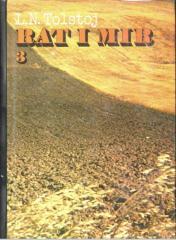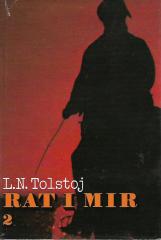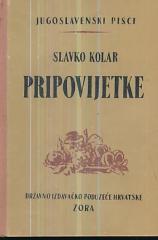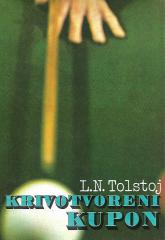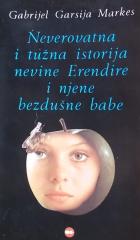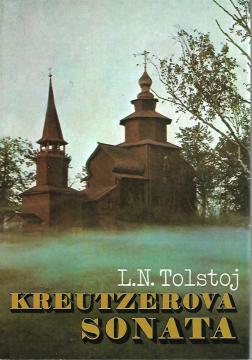
Kreutzerova sonata
Lav N. Tolstoj, majstor književnosti, u svojim novelama Mećava, Albert, Tri smrti, Otac Sergije, Gospodar i sluga, Kreutzerova sonata, Poslije plesa i Hadži-Murat istražuje duboke teme ljudske egzistencije, morala i društva.
Mećava (1856.): Putnik, inspiriran samim Tolstojem, započinje putovanje kočijom kroz snježnu oluju. U borbi s prirodnim silama, vozači i putnici suočavaju se sa strahom i smrtnošću. Mećava postaje metafora za kaotičnost života, a pripovjedač, promatrajući hrabrost i slabosti suputnika, preispituje smisao postojanja. Djelo odražava Tolstojev rani interes za egzistencijalizam i prirodu.
Albert (1858.): Mladi aristokrat susreće Alberta, talentiranog, ali siromašnog glazbenika sklonog alkoholizmu. Pokušava mu pomoći, ali shvaća da društveni jaz i Albertova samo destruktivnost čine spas nemogućim. Priča istražuje umjetnost, klasne razlike i nemogućnost prisilne promjene, odražavajući Tolstojevu fascinaciju moralnim dilemama.
Tri smrti (1859.): Tri priče o smrti – plemića, kočijaša i stabla – povezuju se u meditaciju o prolaznosti. Plemić se boji smrti, kočijaš je prihvaća stoički, a stablo umire prirodno. Tolstoj suprotstavlja ljudske stavove prema smrti, naglašavajući duhovnu jednostavnost, što anticipira njegova kasnija filozofska promišljanja.
Otac Sergije (1898.): Stepan Kasatski, ambiciozni časnik, postaje monah nakon ljubavnog razočaranja. Kao otac Sergije, bori se s ponosom, požudom i slavom, padajući u grijeh prije nego što pronalazi mir u jednostavnom životu. Ova priča odražava Tolstojevu kasnu opsesiju duhovnim preobražajem i odbacivanjem svjetovnih iskušenja.
Gospodar i sluga (1895.): Trgovac Vasilij i sluga Nikita kreću na putovanje tijekom mećave. Vasilij, vođen pohlepom, ugrožava obojicu, ali Nikita, u duhu kršćanske žrtve, spašava ga po cijenu vlastitog života. Priča naglašava Tolstojev ideal nesebičnosti i kritiku materijalizma.
Kreutzerova sonata (1889.): Pozdnjakov, opsjednut ljubomorom, ubija suprugu, vjerujući da je brak i strast korijen zla. Priča, inspirirana Beethovenovom sonatom, izazvala je kontroverze zbog radikalnih stavova o seksu i braku, odražavajući Tolstoyevu kasnu moralnu strogost.
Poslije plesa (1903.): Ivan Vasiljevič prisjeća se plesa na kojem se zaljubio u djevojku, no svjedočenje brutalnog batinanja njezina oca, pukovnika, razbija njegove iluzije o ljubavi i društvu. Ova novela kritizira licemjerje vojske i aristokracije, odražavajući Tolstojev pacifizam.
Hadži-Murat (1904.): Hadži-Murat, čečenski pobunjenik, bori se između odanosti svom narodu i privremenog savezništva s Rusima. Njegova tragična sudbina otkriva sukob između osobne časti i političkih sila. Objavljena postumno, ova novela je remek-djelo Tolstojevog kasnog stila, spajajući epsku naraciju s moralnom dubinom.
Ove novele pokazuju Tolstojev razvoj od ranog realizma (Mećava, Albert) do dubokih moralnih i duhovnih tema (Tri smrti, Otac Sergije). Kreutzerova sonata i Poslije plesa odražavaju njegov radikalni pacifizam i kritiku društva, dok Gospodar i sluga naglašava kršćanske ideale. Hadži-Murat, remek-djelo kasnog opusa, spaja povijesnu naraciju s promišljanjima o slobodi. Ove priče, manje poznate od romana, ključne su za razumijevanje njegove filozofske evolucije.
Rani radovi poput Mećave i Triju smrti hvaljeni su zbog stila, ali Kreutzerova sonata izazvala je skandal zbog kritike braka, čak bila zabranjena u Rusiji. Otac Sergije i Poslije plesa kritizirali su crkvu i vojsku, izazivajući polemike. Hadži-Murat je dočekan kao klasik zbog složenosti i humanosti. Danas se ove priče cijene kao dragulji Tolstojevog genija.
Više primjeraka je u ponudi

